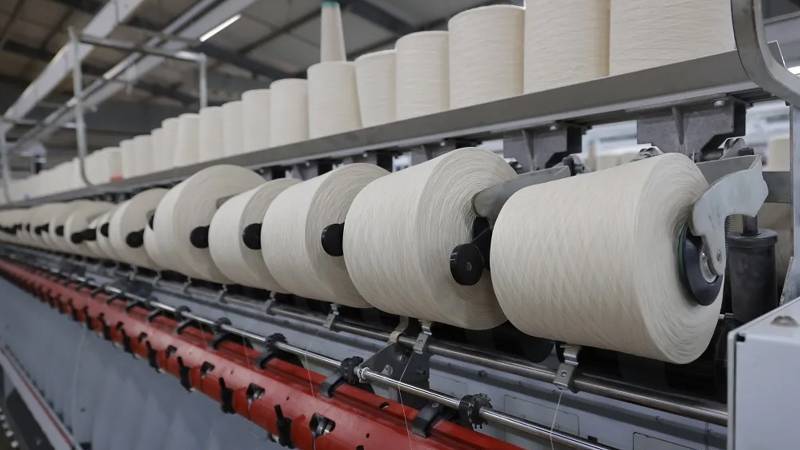
Amidst the accelerating global warming pushing the world toward a climate crisis, the Global South and Global North face distinct challenges. Pakistan, ranked as the 5th most climate-vulnerable country according to the Global Climate Risk Index, faces severe climate risks despite contributing less than 1% to global emissions. As annual COPs fail to generate meaningful progress in climate finance mobilisation, Global South countries are not only facing the impacts of extreme weather events but also bearing the added burden of stringent and growing climate regulations imposed by the Global North.
Considering these growing regulations, Pakistan's textile sector, once poised for increased export revenues, is now on the verge of losing momentum. The textile sector of Pakistan accounts for over 60% of the country’s exports but continues to grapple with decades of stagnant growth. While the government pursues an ambitious $60 billion export target over the next three years, key challenges such as business costs, rising energy costs, lack of trade facilitation, increasing global climate regulations, and frequent internet outages remain sidelined. As the world transitions towards sustainability, Pakistan continues to fall behind. A recent report on the Sustainable Development Goals (SDGs) reveals that Pakistan has dropped nine spots, ranking 137th out of 166 countries, underscoring its substantial developmental challenges.
In 2023, Pakistan ranked among the top 15 textile and apparel exporters, with 38% of its textile exports directed to the EU. Textiles, being the most critical sector in Pakistan's current exports, face a severe looming threat of decline as the world adopts stringent policies to ensure net-zero compliance by 2050, with a milestone target of reducing emissions by half by 2030. The European Union (EU), a leader in global environmental regulation, launched the EU Green Deal in 2019. A key component of this deal is the Carbon Border Adjustment Mechanism (CBAM), which aims to prevent companies from exploiting environmental regulatory disparities in different countries to gain cost advantages while emitting greenhouse gases (GHG). CBAM also ensures that Europe’s climate actions do not inadvertently result in increased carbon emissions in other regions.
CBAM could act as a catalyst for innovation and the adoption of green technologies. Compliance pressures would encourage industries to integrate green technology and transition to low-carbon goods more swiftly
In the first phase of CBAM, importers to the EU are required to report emissions embedded in the production of goods in sectors such as oil refineries, metal production, cement, paper, steel, fertilisers, and certain basic chemicals. By 2026–2030, the EU will expand CBAM coverage to include textiles and apparel, among other goods. Importers will then face carbon pricing for goods, factoring in the actual carbon content of products, average EU ETS allowance prices, free allocation levels, and the effective carbon price in the country of origin. Additionally, new textile labeling regulations could require digital labels that provide comprehensive information on the entire production process and environmental footprint. For Pakistan, sectors likely to be most affected by CBAM include cement, chemicals, steel, agriculture, leather, and textiles. Tackling CBAM will pose substantial challenges for Pakistan and require a strategic and systematic approach.
Trends in Pakistan’s exports to the EU show consistent growth in products like iron, aluminum, organic chemicals, and cement, underscoring Pakistan's trade potential. However, CBAM could significantly impact trade dynamics and market preferences. Peer competitors like Bangladesh and India are taking rigorous steps to prepare for these growing regulations. Meanwhile, according to the Pakistan Environment Trust, 26 companies and organisations in Pakistan have committed to achieving net-zero carbon by 2050, 25 of which are textile-related. Meanwhile, data from the Science-Based Targets Initiative (SBTi) shows that, globally, 48 companies in the textile, apparel, footwear, and luxury goods category have committed to net-zero compliance, with 15 having achieved it, four having set targets, and 29 still in progress.
On the positive side, CBAM could act as a catalyst for innovation and the adoption of green technologies. Compliance pressures would encourage industries to integrate green technology and transition to low-carbon goods more swiftly. However, meeting CBAM regulations will increase cost burdens for Pakistani exporters. To access the EU market, exporters will need to purchase CBAM certificates and quantify their carbon emissions. This resource-intensive process will raise compliance costs, potentially leading to a competitive disadvantage. Many Pakistani industries, particularly small and medium enterprises (SMEs), rely on conventional energy generation methods. As a result, products entering the EU market may become more expensive, reducing their competitiveness compared to locally produced EU goods. There is also a risk of trade diversion, both within domestic firms and among competing countries, depending on their level of compliance. To evade CBAM-related costs, Pakistani exporters may turn to alternative markets with less stringent regulations. While this could mitigate compliance costs, it would come at a price, as the EU remains one of Pakistan’s most significant trade partners.
Currently, Pakistan enjoys GSP+ status and its associated tariff breaks. However, with growing carbon pricing measures, the country may lose its competitive edge in the EU market without adequate preparations. Shortly, Pakistan's exporters must consider several key measures to maintain their market share in developed countries. First, a proper carbon footprint assessment mechanism must be developed, incorporating globally accepted reporting and measuring practices. The entire production process also needs reevaluation to make goods less carbon-intensive. Additionally, the domestic policy landscape requires significant reform to encourage cleaner technologies, and new institutional bodies, such as a National Compliance Centre, could also play a significant role.
As the world’s 5th most affected country by climate change, Pakistan could also appeal to the EU, on behalf of the Global South, for reconsideration of the timeline and extent of these regulations. While the EU Green Deal offers numerous long-term global benefits, it risks unfairly penalising developing countries. Climate change is a shared global threat, but it is unreasonable to expect developing nations to bear the same burden as developed countries, which have historically been the larger emitters of carbon emissions.

